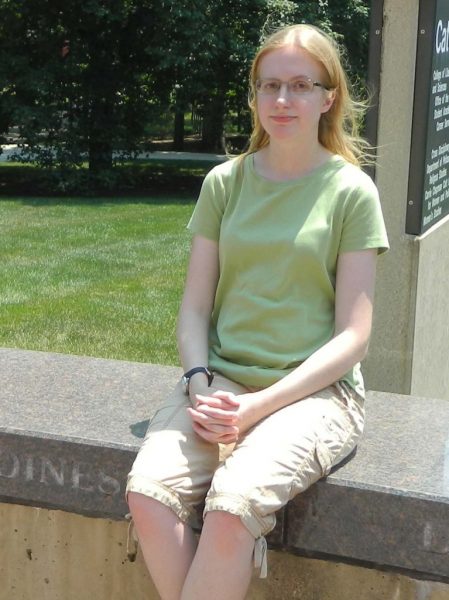The Carrie Chapman Catt Center for Women and Politics started phase one of re-engraving weathered pavers on the Plaza of Heroines in June.
The plaza, located in front of Carrie Chapman Catt Hall, is a mosaic of engraved bricks and granite pavers that was dedicated in 1995 to honor Carrie Chapman Catt and other women who have made an impact on their families, communities and society. In the nearly 20 years since the first bricks and pavers were placed, more than 3,600 women have been honored in the plaza, with additional bricks and pavers placed each year.
“Over the next three years, sections of worn pavers will be removed, re-engraved and reinstalled,” said Dianne Bystrom, center director. “The first several sections of pavers are being re-engraved this summer and will be finished before classes start this fall.”
Several years ago, Catt Center staff had begun looking at possible solutions to the weathered pavers when Michael (Hogan) Martin, a donor to the plaza and a materials engineering senior lecturer at Iowa State, contacted Bystrom. Martin volunteered to have some of his students examine the plaza as a class project. Four students who were enrolled in Materials Engineering 413: Senior Design – Christine Gunzel, Eric Harms, Erik Manatt and Lisa (Nielsen) Murray – took on the project.
“I was thrilled to be a part of the team that investigated the re-engraving process for the pavers in the Plaza of Heroines,” said Murray, now a Ph.D. student in materials engineering at Purdue University. “The opportunity to help with the restoration of the granite pavers was a way to give back to ISU using my materials engineering knowledge.”

Lisa (Nielsen) Murray visits the plaza in June.
The students met with Julie Snyder-Yuly, then assistant director of the Catt Center, and Dayl Inglett of Central Landscapes to review such constraints as aesthetics, durability and cost and to learn about the materials and process for engraving the pavers. Using what they learned from their research, the students analyzed why the pavers were wearing more than the bricks and developed recommendations for the Catt Center.
They found that the most likely cause of wearing was microcracks caused by the flash-firing treatment used by the paver supplier to finish one side of the pavers. This treatment gave the pavers a distinct, attractive finish, but made them more vulnerable to Iowa’s seasonal freeze/thaw cycle, reducing the lifespan of the engravings. Charged with finding a solution to this problem that was visually appealing, cost effective and long lasting, the students got to work.
Because only one side of the pavers had received the flash-firing treatment, the students determined that the pavers could be “flipped” and reused, for a considerable cost savings. The new engraving process recommended by the students starts with a short sandblasting treatment, which provides an appearance similar to the fired surface, but does not create microcracks. The students also recommended that the inner portion of the re-engraved letters be painted black, as is done on the bricks, to help guard against water damage.
The new process of engraving the granite pavers was implemented in the summer of 2011 with the re-engraving of a small selection of pavers from around the plaza. The new process also has been used for any new pavers ordered since 2011. This spring, after it was determined that the new engravings were not showing signs of wear, the Catt Center decided to move forward with re-engraving all the worn pavers on the plaza.
Sue Cloud, communications specialist at the center and curator of the plaza, spent several weeks this summer cataloguing the engravings on every paver. “Tracking down the engravings on the pavers was a great way to get more familiar with the women honored there,” she said. “Reading their profiles has been fascinating, and I can’t wait to share some of their stories in future issues of Voices.”
Murray, who came by the plaza this summer while visiting Ames, said, “I enjoyed contributing to this project because of the lasting impact it will have on maintaining the legacy of honorable women. I am so happy to know that my work has helped make a difference.”